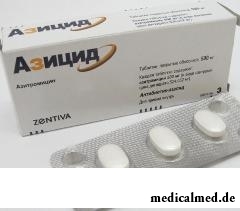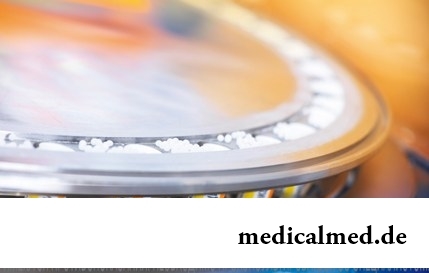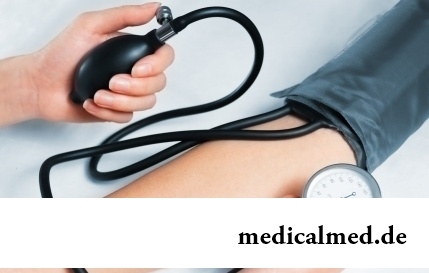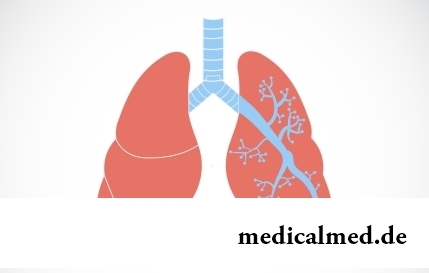





Azitsid
Application instruction:
 Azitsid – an antibiotic of a broad spectrum of activity from group of azaleads (subgroup of macroleads), active concerning some gram-positive cocci, streptococci, gram-negative bacteria, anaerobic microorganisms; it is not effective at the diseases caused by the gram-positive bacteria steady against erythromycin.
Azitsid – an antibiotic of a broad spectrum of activity from group of azaleads (subgroup of macroleads), active concerning some gram-positive cocci, streptococci, gram-negative bacteria, anaerobic microorganisms; it is not effective at the diseases caused by the gram-positive bacteria steady against erythromycin.
Form of release and structure
Dosage form – tablets, coated: white color, round biconvex – 250 mg; white color, oblong shape – 500 mg (on 3 pieces in the blister, in a pack cardboard 1 or 2 blisters).
Contains in 1 tablet:
- Active agent: azithromycin (in the form of a dihydrate) – 250 or 500 mg;
- Kernel: corn starch prezhelatinizirovanny, sodium lauryl sulfate, calcium hydrophosphate, magnesium stearate, croscarmellose sodium;
- Cover: macrogoal 6000, titanium dioxide, talc, gipromelloza 2910/5, polysorbate 80, emulsion of a simetikon of SE 4 (cellulose metilirovanny, siloksana, silicones, water, sorbic acid).
Indications to use
Azitsid is applied to treatment of the diseases caused by microorganisms, sensitive to azithromycin:
- Quinsy, pharyngitis, tonsillitis, sinusitis, average otitis (ENT organs and upper airways);
- Bronchitis, pneumonia – bacterial and atypical (lower parts of respiratory tracts);
- Impetigo, ugly face for the second time infected a dermatosis (skin and soft tissues);
- Uncomplicated uretrita and/or tservitsita (urogenital path);
- Erythema creeping (erythema migrans) – an initial stage of borreliosis (Lyme's disease);
- Scarlet fever;
- The diseases of a stomach and 12-perstny gut associated with Helicobacter Pylori (as a part of complex therapy).
Contraindications
Absolute:
- Renal/liver failure;
- The children's age up to 3 years or body weight is less than 25 kg;
- The lactation period (or feeding should be suspended);
- Hypersensitivity to any component of Azitsid or other macroleads.
Relative (it is required to be careful at administration of drug):
- Arrhythmia;
- Pregnancy;
- The expressed dysfunctions of kidneys/liver at children.
Route of administration and dosage
Azitsid it is necessary to accept in 1 times a day, between meals – in 1 hour prior to food or in 2 hours later.
The recommended dosing modes for adults:
- Respiratory infections: on 500 mg of 1 times a day within 3 days;
- Infections of soft tissues and skin: the 1st day – 1000 mg of 1 times a day, 2-5 days – on 500 mg of 1 times a day;
- Acute infections of urinogenital bodies: 1000 mg once;
- Erythema migrans: the 1st day – 1000 mg of 1 times a day, 2-5 days – on 500 mg of 1 times a day;
- The peptic ulcer of a stomach and 12-perstny gut associated with Helicobacter Pylori (as a part of a combination therapy): on 1000 mg/days within 3 days.
The dose for children is defined depending on their weight: on 10 mg/kg of 1 times a day within 3 days or 10 mg/kg in the first day, for the next 3-4 days – on 5-10 mg/kg/days.
At an erythema to children appoint creeping: the 1st day – 20 mg/kg, 2-5 days – on 10 mg/kg.
Side effects
- Alimentary system: often (more than 3% of cases) – nausea, abdominal pains, diarrhea; seldom (less than 1% of cases) – a melena, a meteorism, dyspepsia, vomiting, increase in activity of hepatic transaminases, cholestatic jaundice; children have a gastritis, anorexia, locks;
- Cardiovascular system: seldom – thorax pain, a cardiopalmus;
- Nervous system: seldom – a headache, вертиго, drowsiness; children have an uneasiness, a sleep disorder, neurosis, a hyperkinesia, a headache (at treatment of average otitis);
- Urinogenital system: seldom – nephrite, vaginal candidiasis;
- Allergic reactions: rash on skin, a Quincke's edema, a photosensitization; children have an itch, urticaria;
- Others: candidiasis of a mucous membrane of an oral cavity, increased fatigue; children have a conjunctivitis.
Special instructions
In case of the admission of the next reception it is necessary to accept the passed dose as soon as possible, and the subsequent – with 24-hour intervals.
At co-administration of antacids between administrations of drugs it is necessary to observe a break of ≥2 hours.
At some patients after Azitsid's cancellation hypersensitivity reactions which demand performing specific therapy under medical control can remain.
Medicinal interaction
The food, ethanol and antacids containing magnesium or aluminum slow down and reduce azithromycin absorption.
Linkozamina reduce Azitsid's efficiency, tetracycline and chloramphenicol – increase.
Azithromycin at simultaneous use increases concentration of digoxin, strengthens toxic effect of ergotamine and dihydroergotamine, reduces clearance and strengthens pharmacological action of a triazolam.
Azithromycin slows down removal, than increases concentration in a blood plasma and toxicity of the following medicines: indirect anticoagulants, фелодипин, Cycloserinum, Methylprednisolonum, and also the drugs which are exposed to a microsomal oxidation such as ergot alkaloids, peroral hypoglycemic means, valproic acid, терфенадин, hexobarbital, Bromocriptinum, Disopyramidum, Phenytoinum, cyclosporine, carbamazepine, theophylline and other ksantinovy derivatives.
As macroleads strengthen anticoagulating effect of warfarin, the similar effect can be expected also at simultaneous use of azithromycin therefore at use of this combination it is necessary to control a prothrombin time.
Terms and storage conditions
To store at a temperature up to 25 °C. To protect from children.
Period of validity – 2 years.
At regular visit of a sunbed the chance to develop a carcinoma cutaneum increases by 60%.

On health of the person physicians know about salutary action of animals long ago. About 7 thousand years ago great Hippocrates рекоменд...
Section: Articles about health
The state of health of the person depends on many factors. One of the most important is the constant, but not exhausting a physical activity. In the presence of various illnesses specialists often advise patients to do swimming which by right borrows ведущ...
Section: Articles about health
Each failure in work of bodies and systems of a human body is, as a rule, shown by the whole complex of symptoms. In particular, malfunctions with health often cause emergence of cosmetic defects in the form of rashes on a face. Experienced doctors know that localization of heat-spots usually depends on what disease the patient has....
Section: Articles about health
For the help to doctors in the choice of optimal solutions for treatment of various diseases the Cochrane scientific organization (Cochrane) will see off совм...
Section: Articles about health
Venereal diseases in medicine are called the infections which are transmitted preferential sexually, now they and are called - infections, sexually transmitted, or STD. Among them is also life-threatening. In spite of the fact that majority...
Section: Articles about health
Hemorrhoids – extremely widespread disease. Periodically arising inflammations and bleeding of hemorrhoidal nodes cause serious discomfort to nearly fifteen percent of adults. Meanwhile, having a clear idea of the reasons of an exacerbation of an illness and following rules of precaution, it is possible to reduce substantially sharpness of unpleasant feelings and to reduce progressing of a disease....
Section: Articles about health
Phobia – the persuasive fear of a certain contents shown in a specific situation against the will of the person. Concepts of a phobia and fear...
Section: Articles about health
Stroke (acute disorder of cerebral circulation) – one of the most widespread neurologic diseases. Annually in the world more than 6 million people die of this illness. From the survived patients about 80% become disabled people, and nearly a thirds from them впо...
Section: Articles about health
What they, women? Beautiful, gentle, passionate and at the same time windy, gusty, and nervous. And what is stranger: have all these qualities of the woman at the same time. But here only the mood their time sharply changes on completely opposite: in the morning they laugh and joke, and in the evening cry or are irritated....
Section: Articles about health
For most of the working people the problem of having a snack is particularly acute enough. Sooner or later there is a question: what is possible quickly for a sja...
Section: Articles about health
One of the useful properties presented to the person by the nature is ability to feel fear. This ability is designed to signal about approach of a dangerous situation and to help to avoid in advance it to keep life. However if the fear is persuasive and not about...
Section: Articles about health
Bees – really unique beings. Practically all products of their life activity are used by the person. Since the most ancient times medicinal properties of honey and other substances received in the course of beekeeping are known. The fact that all these products are recognized not only national, but also official medicine is especially significant. About influence and routes of administration of bee "drugs" the speech in this article will also go....
Section: Articles about health
On the head of the person about one million hair follicles, or as they are called still, hair bulbs are located. At the moment he is born...
Section: Articles about health
Bulimia and anorexia, are heavy deviations of a feeding behavior, become a cause of death of patients much more often than all other nervous breakdowns combined. In 60% of cases two illnesses accompany each other: patients feel horror before danger on...
Section: Articles about health
The climax, or menopause is the normal process of the termination of genital function of the woman which is followed by serious hormonal changes in an organism. Usually the menopause begins at the age of 50-55 years, but characteristics of this process are very individual. Factors of earlier approach of a climax are irregular sex life, numerous abortions, addictions, existence of endocrine, autoimmune and gynecologic diseases, frequent stresses and excessive hobby of diets...
Section: Articles about health
New year, wedding, birthday, office party – an occasion to drink at the Russian person will always be. How to reduce a negative impact...
Section: Articles about health
The stroke is one of the most widespread diseases of the person, annually in the world about 6 million cases of this pathology are registered. According to medical statistics, strokes occur almost three times more often than myocardial infarctions. Disease otno...
Section: Articles about health
They say that to ensure health and longevity of people it is obliged. Really, at competent approach to these questions, minimization of an adverse effect of many factors does not represent a special problem. Practically everyone has an opportunity to play sports, to pick up an optimum operating mode and rest, to adjust healthy food, to refuse addictions. It is more difficult to exclude hit in an organism of harmful substances through a respiratory organs: not all are able to afford to live in the area with хо...
Section: Articles about health
The technique of acupuncture (acupuncture) is used in the medical purposes more than three and a half millennia. It widely races...
Section: Articles about health
Physical activity is necessary for normal functioning of a human body. At a lack of the movement joints cease to function, muscles atrophy, cardiovascular activity is broken and the metabolism worsens. Modern городс...
Section: Articles about health
What is in our understanding weeds? It plants which are considered to be suitable only for compost pits and feeding of animals. Meanwhile, among the weeds growing literally under legs it is possible to find the mass of the officinal herbs having invaluable advantage for human health. It is possible not only to be treated by most of them, using as broths, tinctures, compresses, but also to accept in food as usual products. Let's consider 8 widespread and often ignored by people...
Section: Articles about health
During foot walks blood moves on vessels more actively and one and all bodies are supplied with a large amount of oxygen. N...
Section: Slideshow
All diseases from nerves – in this joke a big element of truth, are said by doctors. Constant stresses lead to decrease in protective forces of an organism, and it becomes vulnerable for a set of diseases. It is wrong to think that the stress is a problem of the present. Life of people and hundred...
Section: Articles about health
Childbirth is the most important event in life of each woman. We are women we give birth to the new little man on this light. Now the tendency to that was outlined, as men want to participate in labor too. But there is a question and whether it is worth allowing the husbands on childbirth?...
Section: Articles about health
Run - one of the most available and effective ways to revitalize the organism. Knowing about its extraordinary advantage, each of us though...
Section: Articles about health
Stability of a hormonal background is one of the most important conditions of preservation of health of the woman. At the same time endocrine system – the thin device extremely sensitive to any external influences. Changes of an image жиз can become the reason of hormonal failure...
Section: Articles about health
The naturopathy sometimes moves as the new direction of medicine, something like fashionable hobby, and there is nothing farther from the truth. This most ancient direction, the word "naturopathy" is translated as "treatment by the nature", and, no doubt, treatment by natural gifts was the first and only, available to the person in ancient times. Despite modern achievements of medicine, the naturopathy remains urgent and today, anyway the person - a part of the nature, and природн...
Section: Articles about health
